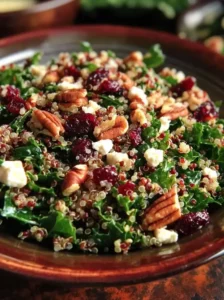Creamy Butternut Squash Soup: A Delicious Comforting Recipe
When the crisp autumn air sets in, there’s nothing quite like a warm bowl of creamy butternut squash soup to soothe your soul. This delicious recipe blends sweet and savory flavors to create a comforting dish that’s perfect for cooler months. Made with fresh butternut squash, this soup boasts a silky, smooth texture and rich, complex flavor profile, enhanced with the perfect hint of spices. Whether served as a starter or a main course, this soup is sure to be a hit at your dinner table.
The appeal of creamy butternut squash soup is in its simplicity and versatility. The delightful golden hue of the butternut squash makes a beautiful presentation while the aroma wafts through your kitchen, enticing family and guests alike. Plus, this soup is packed with nutrients, making it as healthy as it is delicious. Read on to discover how you can craft this wonderful dish in your own kitchen, with some added tips and tricks for a perfect soup every time.
Quick Recipe Highlights
- Flavor Profile: The creamy butternut squash soup is a harmonious blend of sweet and savory, with notes of nutmeg and cinnamon bringing warmth and depth.
- Texture: This soup features a luxuriously smooth texture that coats the palate, achieved by blending roasted butternut squash and a touch of cream.
- Aroma: Infused with aromatic herbs and spices, the soup releases an inviting fragrance that fills the home with warmth and comfort.
- Visual Appeal: The vibrant orange hue of the soup, often garnished with a swirl of cream or fresh herbs, makes for a visually stunning dish.
- Skill Level Needed: This is an easy recipe that requires basic cooking skills, perfect for novice cooks or those looking for a quick, hassle-free dish.
- Special Equipment: A blender or immersion blender is needed to achieve the desired creamy consistency.
Recipe Overview
- Difficulty Level: This recipe is classified as easy, primarily because it involves simple steps like roasting and blending, which are accessible to most home cooks.
- Category: Creamy butternut squash soup can be enjoyed as a starter, a side dish, or a light main course, making it a versatile addition to any meal plan.
- Cuisine: Although this soup takes inspiration from traditional comfort foods, it can fit into a wide range of culinary traditions, from classic American to modern European.
- Cost: With basic ingredients such as butternut squash, spices, and cream, this recipe is budget-friendly and offers a high return on taste.
- Season: Best enjoyed in the fall and winter when butternut squash is in season, offering the freshest produce and greatest flavor.
- Occasion: Perfect for a cozy family dinner, an elegant appetizer at a dinner party, or a comforting dish on a gloomy day.
Why You’ll Love This Recipe
The creamy butternut squash soup is beloved for its rich taste and velvety texture, combining sweet and savory elements into a harmonious dish that pleases any palate. The balance of spices enlivens the flavor, making every spoonful a delight. It is this delicious combination of aromas and tastes that makes this soup a favorite among seasonal recipes.
In terms of convenience, this dish is a winner. With minimal prep work and a straightforward cooking process, it’s perfect for busy individuals who want to enjoy a home-cooked meal without extensive time investment. Its ease of preparation makes it an excellent choice for weeknight dinners or quick lunches.
Creamy butternut squash soup isn’t just delicious; it’s also nutritious. Butternut squash is rich in vitamins and minerals, providing a host of health benefits. This soup is a great source of dietary fiber, vitamins A and C, and potassium, contributing to better digestion, improved vision, and immune support.
Socially, this soup is a hit for entertaining guests. Its inviting aroma and upscale appearance make it a standout choice for gatherings or intimate dinners. Sharing this recipe is also a wonderful gesture, allowing those you love to discover a new favorite dish.
Cost-effectiveness is another reason to love this recipe. The ingredients are affordable and often found in most households, making it accessible to many. With its filling nature, it provides significant servings, offering great value while delivering exceptional taste and nutrition.
Historical Background and Cultural Significance
This creamy butternut squash soup has origins rooted in the comfort foods of North America, where squash has long been a staple ingredient in local cuisines. As one of the earliest domesticated plants in the Americas, squash was cultivated by indigenous peoples and has been an essential part of traditional diets for centuries.
Culturally, the soup represents a fusion of modern culinary techniques with age-old ingredients. Squash soups have been part of indigenous food traditions, revered for their ability to provide nourishment through colder months. The modern twist of cream and spices elevates this rustic dish to contemporary gourmet status.
The evolution of this recipe is a testament to the adaptability of butternut squash. It transitioned from basic squashes and stews to more refined soups seen in diverse global cuisines, often personalized with unique spices and flavors. Today, it remains a staple of autumn and winter menus, beloved for its comfort and simplicity.
Regional variations of creamy butternut squash soup are common, each showcasing local flavors and available spices. In some areas, it might include hints of curry or ginger, while others may emphasize more autumnal spices like cinnamon and nutmeg, each bringing a unique story and flavor to the table.
Ingredient Deep Dive
Butternut squash takes center stage in this soup, offering a delectable sweet flavor and creamy texture. Traditionally grown in North America, it is now popular worldwide, prized for its nutritional profile and versatility in dishes. Rich in vitamins A and C, it supports vision health and immunity.
When selecting butternut squash, look for those with unblemished skin and a hefty feel. This indicates a mature squash with a sweeter flavor. Store it in a cool, dry place for up to a month. As a substitute, consider using other winter squash varieties like acorn or kabocha, keeping the soup’s essence intact.
Cream adds the luscious smoothness that defines the soup’s texture. Whole cream or half-and-half can be used, depending on the desired richness. It’s best to add the cream toward the end of cooking to prevent curdling, ensuring the soup remains silky and homogenous.
Nutmeg and cinnamon bring warmth and depth to the soup, complementing the squash’s natural sweetness. These spices have been traded for centuries, celebrated for their aromatic properties and ability to enhance sweet and savory dishes alike. For an alternative spice profile, ginger or allspice can lend a different aromatic angle.
Common Mistakes to Avoid
- Overcooking the squash can lead to mushiness. Keep an eye on it and remove from the oven when the pieces are tender yet firm.
- Adding too much liquid during blending results in a watery consistency. Begin with less and adjust to achieve a creamy texture.
- Forgetting to season properly can make the soup bland. Taste as you go and adjust spices and salt to suit your taste.
- Using low-quality cream can compromise the flavor. Opt for fresh, dairy cream for the best results.
- Skipping the roasting step results in less flavor. Roasting the squash intensifies its sweetness and adds depth to the soup.
- Blending while hot can cause splattering. Let the ingredients cool slightly before blending for safety.
- Not straining the soup may result in a gritty texture. For the smoothest soup, consider straining to remove any fibrous pieces.
- Serving the soup too cold can dull its flavors. Heat gently before serving to enhance aroma and taste.
Essential Techniques
Roasting the squash is pivotal in creating a rich, concentrated flavor. This method caramelizes the natural sugars, enhancing sweetness and depth. Master it by cutting uniform pieces to ensure even roasting, and watch for a golden-brown color indicating readiness.
Blending is key to a smooth texture. Use an immersion blender for convenience, or process in batches with a high-power blender for velvet-like results. Avoid air bubbles by tilting the blender wand slightly, ensuring a consistent mix throughout.
Seasoning the soup allows its flavors to shine. Start with spices like nutmeg and cinnamon, adding them gradually, then taste and adjust. Well-seasoned soup balances sweet, savory, and earthy tones, creating complexity in each spoonful.
Pro Tips for Perfect Creamy Butternut Squash Soup
For added flavor, incorporate garlic or onion into your roasted squash. These aromatics meld wonderfully with the squash’s sweetness, offering an extra layer of taste complexity.
Using homemade stock boosts flavor and nutrition. Vegetable or chicken stock adds depth, enriching the overall profile of the soup. Simmer gently to extract optimal flavor without clouding.
Stir in herbs like thyme or rosemary when serving. These herbs infuse freshness and vibrant green notes, complementing the soup’s richness and making it restaurant-worthy.
To achieve an ultra-creamy consistency, finish with a knob of butter, enhancing flavor and thickness without adding extra cream.
Balance sweetness by adjusting spices. If the squash is overly sweet, more nuanced spices like smoked paprika can add warmth and earthiness.
Experiment with garnishes. Toasted seeds or a drizzle of truffle oil can elevate presentation and add intriguing flavor contrasts.
Variations and Adaptations
Regionally, creamy butternut squash soup varies by spice mix. In Asia, flavors like ginger and lemongrass may replace traditional warm spices, creating a perfect fusion of East meets West in every bite.
Seasonal adaptations can include adding late-summer vegetables like zucchini for a lighter soup or incorporating hearty winter greens like kale to increase nutritional content and add texture.
For dietary modifications, coconut milk easily substitutes traditional cream for a vegan-friendly version, while maintaining a rich mouthfeel. Alternatively, almond or oat milk offers a delectable, dairy-free choice.
Flavor variations can be achieved by introducing ingredients like apple or pear for a fruity twist. These fruits add sweetness and acidity, complementing the natural creaminess of the squash.
To modify texture, try introducing cooked quinoa or barley. These grains add body to the soup, providing a sophisticated twist and making it more filling.
Presentation alternatives include serving the soup in hollowed-out squash bowls for a charming fall look. This unique touch also surprises and delights guests with its appealing, rustic elegance.
Serving and Presentation Guide
Plating techniques are essential for making your creamy butternut squash soup visually appealing. Consider serving in wide, shallow bowls to accentuate the vibrant orange hue and display garnishes attractively.
Garnishing ideas include swirls of cream or crème fraîche, a scattering of toasted pumpkin seeds, or a sprinkle of freshly chopped chives. Such garnishes add texture contrasts and visual interest.
Traditional accompaniments include crusty bread or a simple green salad, their lightness providing a perfect balance to the soup’s richness.
Modern serving suggestions involve pairing with artisan toasted sandwiches or crispy crackers, making it ideal for a quick lunch or casual supper.
Temperature considerations suggest serving the soup hot but not boiling, allowing flavors to bloom without scorching, to preserve the soup’s rich, smooth character.
Portion control tips include using small ladles or cups for controlled servings, preventing overeating while still offering satisfying taste bites. For entertaining, mini cups or shooters make the soup perfect for cocktail parties or holiday gatherings.
Wine and Beverage Pairing
Wine pairings can enhance the overall flavor of creamy butternut squash soup. A well-chilled Pinot Gris or Chardonnay complements the creamy texture and sweet flavors by adding a crisp, refreshing note.
Non-alcoholic alternatives include sparkling apple cider or pear juice, whose intrinsic acidity and effervescence balance the soup’s richness and sweetness without overwhelming.
If coffee or tea is preferred, opt for a lightly brewed herbal tea such as chamomile or peppermint, whose subtle flavors cleanse the palate and enhance the overall dining experience.
Temperature considerations suggest serving beverages slightly chilled to contrast the warm, comforting soup, enhancing the overall sensory experience with complementary temperature play.
Consider using elegant glassware for wines and juices, or contemporary ceramic teapots for tea, to elevate the dining setup, creating an enjoyable, cohesive presentation for your meal.
Storage and Shelf Life
For optimal storage, transfer cooled soup into airtight containers, leaving space for expansion if you plan to freeze. This preserves freshness and flavor integrity over time.
Keep the soup refrigerated for up to four days, ensuring it remains at a temperature of 40°F (4°C) or below to stay safe to eat. The longevity of the soup is maintained with proper storage methods.
Container recommendations include glass jars with tight-fitting lids or ceramic bowls with cling wrap. Both options prevent odor absorption and preserve flavors.
Signs of spoilage to watch for are off odors, unusual textures, or color changes, indicating the soup is no longer safe to eat.
Reheat gently on the stovetop, stirring occasionally to maintain the creamy consistency, or use a microwave, stopping to stir halfway through, ensuring even warming.
Freezing guidelines suggest portioning soup into single servings before freezing, which speeds up defrosting and encourages portion control. Defrost overnight in the refrigerator before reheating for the best texture.
Make Ahead Strategies
Prep timeline benefits from batch cooking, allowing squash to be roasted and stored a day ahead, ready for blending into soup as needed.
Storage between steps involves refrigerating roasted squash and aromatics separately, assembled as a complete dish shortly before serving to maintain freshness.
Quality impact is minimized by storing components separately, preserving texture and preventing over-softening between making and serving the soup.
For assembly tips, combine stored ingredients just before reheating, enhancing the soup’s fresh flavors and restoring its creamy consistency.
Reheating guidelines advocate for slow warming on the stovetop to maintain silky smoothness, essential for enjoying the soup’s comforting texture.
To add fresh elements, sprinkle herbs or drizzle cream when serving, giving the soup a just-made appeal that engages the senses anew.
Scaling Instructions
Halving the recipe is manageable and effective. Consider using half of each ingredient, maintaining proportionality to ensure flavor isn’t compromised.
For doubling or tripling efforts, scale ingredients proportionately, ensuring the sizes of cookware and power of blender can accommodate larger volumes efficiently.
Equipment adjustments include using larger pots to avoid overcrowding ingredients, maintaining an even cooking process and preventing accidental spillage during blending.
Timing modifications account for slightly longer roasting and blending times due to increased volume. Monitor progression carefully to ensure the same quality is maintained, no matter the batch size.
Storage considerations expand with size, requiring more refrigerator and storage container space. Plan accordingly with an assortment of storage options to avoid waste.
Nutritional Deep Dive
A macro breakdown of creamy butternut squash soup shows it as a balanced dish, high in complex carbohydrates, with moderate fat from cream, and topped with some protein, especially if garnished with seeds.
Micronutrient analysis highlights vitamins A and C, potassium, and dietary fiber content from squash, contributing to a healthier immune system, better heart health, and digestion.
Health benefits include antioxidant properties from vitamins A and C and digestive improvements courtesy of dietary fiber, supporting overall well-being.
Dietary considerations offer a flexible base for those with specific needs, easily adaptable for gluten-free, vegan, or low-fat diets by mindful ingredient selection.
Portion analysis helps with calorie count, integrating portion tips for meal planning to maintain dietary goals without sacrificing enjoyment or flavor.
Weight management tips suggest pairing the soup with high-fiber sides or adding protein-rich garnishes to promote satiety, making it a smart choice for balanced dietary intake.
Dietary Adaptations
For a gluten-free version, ensure any added garnishes or sides (like croutons) are certified gluten-free, as the base soup itself is naturally gluten-free.
To adapt for a dairy-free diet, replace cream with coconut or almond milk. This small change retains the soup’s creamy texture while respecting dietary limitations.
For a vegan-friendly option, ensure no animal-based ingredients like dairy cream are used, replacing with coconut milk to achieve rich creaminess without sacrificing taste.
For low-carb variants, decrease or omit high-carb garnishes, and opt for low-carb additions like avocado slivers or crunchy nuts to enrich texture.
Keto adaptations invite richness, ensuring the soup remains high in fats and low in carbohydrates with full-fat coconut milk, providing satiating, keto-friendly macronutrients.
For the Paleo community, using whole, unprocessed ingredients aligns the soup with paleo guidelines, embracing natural flavors and ensuring regulatory compliance.
A Low-FODMAP approach involves careful ingredient substitutions, like using a less potent onion alternative or low-FODMAP milk, reducing digestive stress while retaining taste integrity.
Troubleshooting Guide
For texture issues, reheating on low resolves graininess. Strain soups to eliminate any remaining fibrous vegetable matter, ensuring consistent smoothness enjoyed from first spoonful to last.
To improve flavor balance, seasoning adjustments are key. Taste test frequently during preparation, making careful spice and salt enhancements, achieving harmonious sweetness, savoriness, and spice.
Temperature problems, like overheating, may yield burnt flavors or altered textures. Use gentle, even heat throughout cooking, preventing scorching or boiling away rich flavors.
Facing equipment challenges such as lacking a blender, mash with a potato masher and whisk until smooth. This alternative method maintains texture, although less refined than blending.
For ingredient substitutions, guidelines such as replacing dairy with coconut aid dietary adherence. Balance flavors with careful ratios to preserve the soup’s intrinsic character and appeal.
Timing concerns in cooking or prepping can impact results; time management ensures well-roasted, properly softened squash, delivering the desired creamy soup texture.
Recipe Success Stories
Community feedback often highlights how creamy butternut squash soup becomes a household favorite, praised for ease and taste. Its adaptability ensures broad appeal and repeat requests.
Variation successes among readers showcase exciting ingredient swaps, from adding cumin for warmth to integrating apple for sweetness, expanding the soup’s flavor repertoire.
Adaptation stories about transforming this recipe into a form fit for special diets inspire others. Embracing modifications ensures inclusivity at shared tables.
Reader suggestions involve creative presentations such as serving in pumpkin bowls for festive occasions, adding a unique aesthetic enhancing the dining experience.
Photography tips center around capturing the soup’s inviting hue and creamy swirls through natural lighting and attractive garnishes, compelling viewers through visual representation.
Frequently Asked Questions
Can I use frozen butternut squash? Yes, frozen squash can be used. Simply adjust cooking times, as frozen squash may cook faster once thawed. Ensure it reaches full tenderness before blending.
What if I don’t have an immersion blender? A regular blender works well to achieve smoothness. Blend soup in batches, carefully handling hot liquids to prevent burns or spills.
Is there a way to make the soup less sweet? Incorporating more savory spices like smoked paprika or adding tangy elements like a splash of citrus can balance out any excessive sweetness.
Can I freeze the soup? Yes, creamy butternut squash soup freezes well. Ensure cool, portion, and freeze in airtight containers, reheating gently once thawed to maintain texture and flavor.
What can I use instead of nutmeg? Cinnamon offers a warm alternative, or try using a spice blend like allspice for a subtly different taste profile.
How do I store leftover soup? Refrigerate in airtight containers for up to four days, ensuring the temperature stays beneath 40°F (4°C). Reheat before serving for optimal taste.
Can I make this soup spicy? Certainly! Adding cayenne pepper or chipotle powder introduces heat, customizing to preferred spice levels while maintaining the soup’s creamy profile.
What type of cream should I use? Heavy cream or half-and-half gives great results. For a lighter version, choose whole milk or a dairy-free equivalent, adjusting richness as needed.
How do I stop cream from curdling in the soup? Add cream at the end of cooking, ensuring the soup isn’t boiling. Stir continuously after addition, maintaining a gentle heat to preserve smoothness.
Additional Resources
Explore related recipes like roasted carrot and ginger soup, which offers another comforting alternative using seasonal produce. Techniques for perfect pureed soups enhance understanding of texture management.
Browse ingredient information on butternut squash’s versatility in various dishes, inviting creativity in meal planning and culinary experimentation.
Consider equipment recommendations like immersion blenders, praised for their convenience in achieving lush purees without transferring hot liquids.
Delve into seasonal variations like a spring green squash soup, enhancing meal variety and seasonal enjoyment through creative, adapted uses of produce.
Print
Creamy Butternut Squash Soup
Description
A rich and velvety soup perfect for chilly days, flavored with warm spices and creamy goodness.
Ingredients
For the Crust:
- 1 medium butternut squash, peeled and cubed
- 1 medium onion, chopped
- 2 cups vegetable broth
- 1 cup coconut milk
- 1 tablespoon olive oil
- 1 teaspoon ground cinnamon
- Salt and pepper to taste
Instructions
1. Prepare the Crust:
- Heat olive oil in a large pot over medium heat. Add onion and sauté until translucent.
- Add the butternut squash cubes and cinnamon. Cook for an additional 5 minutes, stirring occasionally.
- Pour in the vegetable broth and bring to a boil. Reduce heat and let it simmer until the squash is tender, about 20 minutes.
- Using an immersion blender, blend the mixture until smooth. Stir in coconut milk and season with salt and pepper.
- Allow the soup to heat through gently. Serve warm, garnished with a sprinkle of cinnamon if desired.
Notes
You can customize the seasonings to taste.





